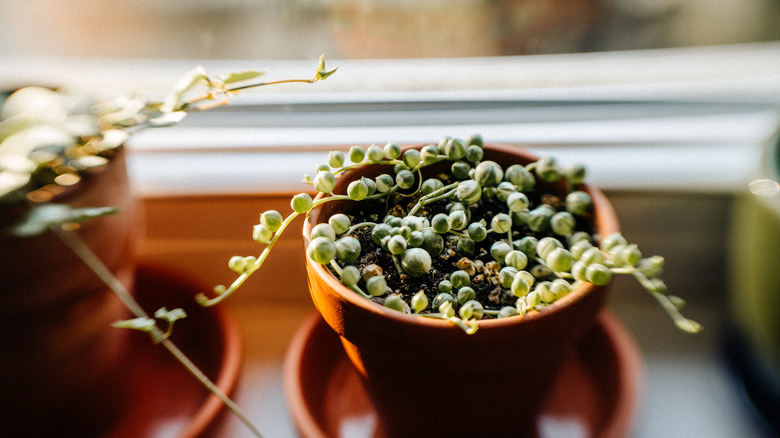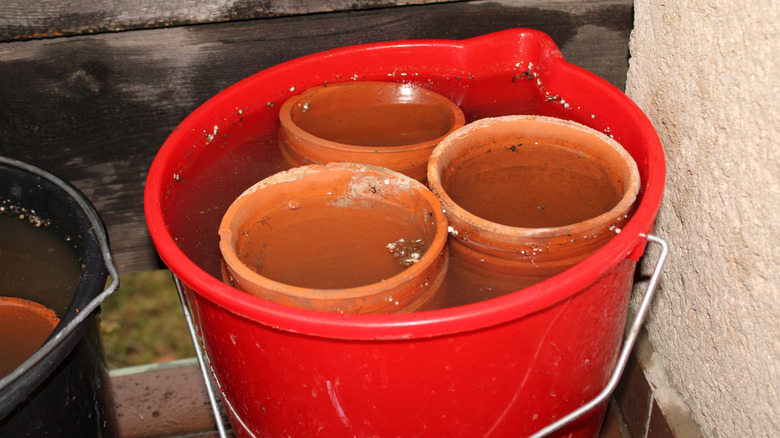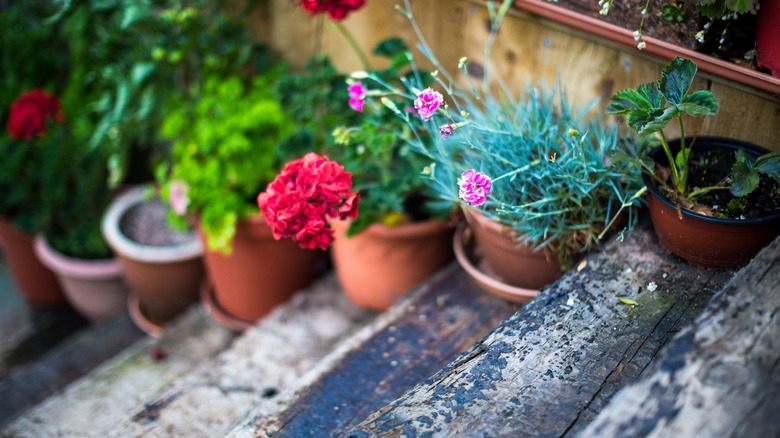Do Terra Cotta Plant Pots Grow Mold?
Terra cotta, a familiar earthenware with distinctive burnt orange hues, has been used for generations as a reliable vessel for potting plants. Today, it's still ubiquitous among gardeners as a stylish way to upgrade your potted plant aesthetic. There are many benefits to planting your green companions in terra cotta pots. Terra cotta's earth-toned color acts as a great neutral that pairs well with many designs and patinas over time, leaning into a more vintage look as it ages. Terra cotta is also durable and regulates temperature quite well, retaining warmth in the colder months and cooling down in the summer months. Another key factor for choosing terra cotta is the material's breathability. Its porosity helps with air flow, but it affects moisture as well. Terra cotta absorbs quite a bit of water, drying out soil and requiring you to rehydrate the plants more often. All that moisture wicking brings another challenge: mold.
Unfortunately terra cotta isn't perfect, and it molds despite its ability to dry out quickly when confronted with too much water. For this reason, some plants just don't thrive when planted in terra cotta. However, this doesn't mean you should throw out all of your terra cotta pots for fear of moisture issues and mold. In fact, cleaning these pots is quite simple, and you can easily restore the health of your terra cotta planters.
How get rid of mold on your terra cotta pots
Because of its porous nature, terra cotta pots are susceptible to fungal mold, particularly white mold. While not necessarily detrimental to your plants, you don't want mold lingering around your home. There are several ways of cleaning mold off your pots, and all the materials you need are likely sitting in your cabinet. First, one of the stronger methods of mold removal is bleach. Make a solution of one part bleach and 20 parts water, mixing them together in a spray bottle. Spray it directly on the pot, then carefully scrub the bleach away, soaking the pot in water after you've gotten all the mold off. Remember to remove the plant from the pot before cleaning.
A simpler, less harsh alternative to the bleach solution method is a vinegar and water solution. Fill your sink with one part vinegar and five parts hot water. Soak your empty pots in the solution for an hour — more for particularly moldy and/or stained pieces — and then scrub the pot. Dry it off with a towel when done scrubbing. This method also works great to remove any algae stains too.
Lastly, you can also use dish soap as a way to get rid of mold on your terra cotta pots. Similar to the vinegar and water method, add a squirt of dish soap to a large container or sink of water. Let the pot soak and scrub the mold away using steel wool, simultaneously tackling some stains along with mold. After you rinse the suds off, let the pots air dry.
How to protect your pots from mold
If you want to reduce the risk of mold accumulating on your terra cotta pots, there are a couple of preventive measures you can take. One of the easiest preventative methods is to simply place your pot in a room with good ventilation and air flow. Stagnant air and humidity are big contributors to mold growth, so think twice about positioning any terra cotta pots in areas of high moisture, like the bathroom. Anywhere else indoors, be sure it's next to a window or fan for air flow.
Second, consider either sealing your terra cotta pots or even purchasing glazed pots to prevent those moisture absorption issues. Tung oil is a great non-toxic, natural sealant material that you can apply to both the inside and outside of the pot, while hemp oil can be used to seal the pot's exterior. Purchasing pre-glazed terra cotta pots, however, ensures your pots will be moisture, mold, and stain-proof from the start. Among other tips for planting with terra cotta pots, considering some of these ideas for tackling existing mold on your pots will protect the lifespan of these pieces for years to come.


